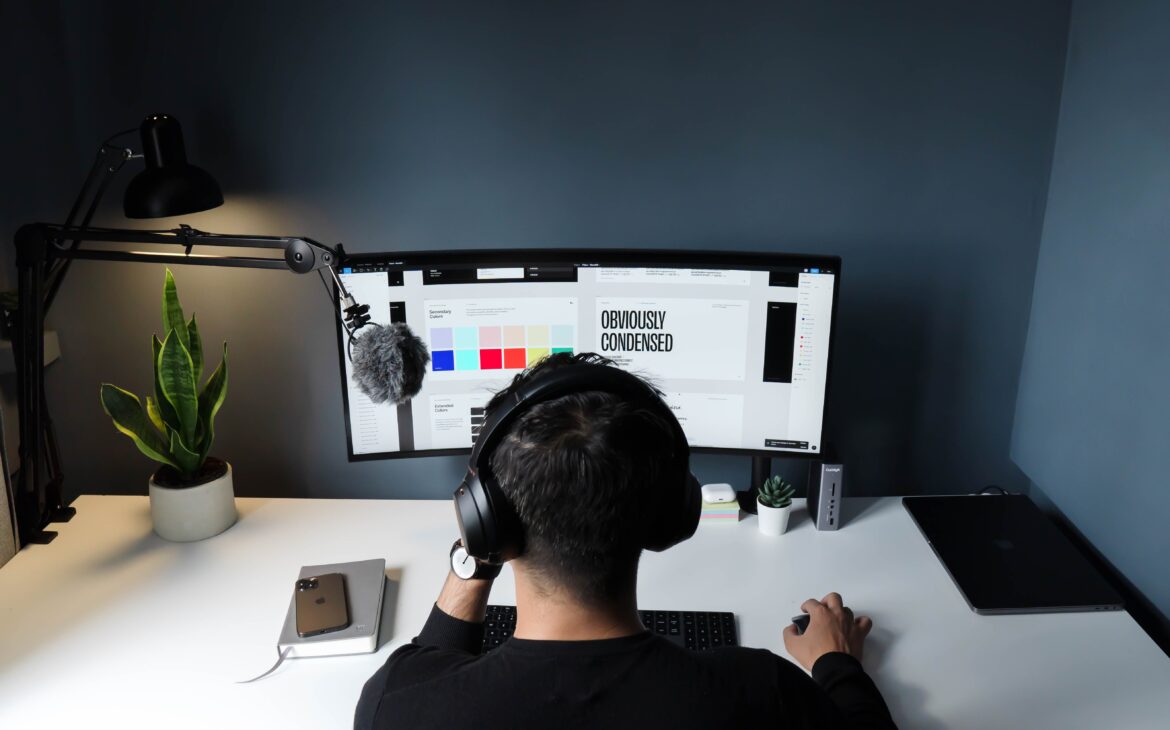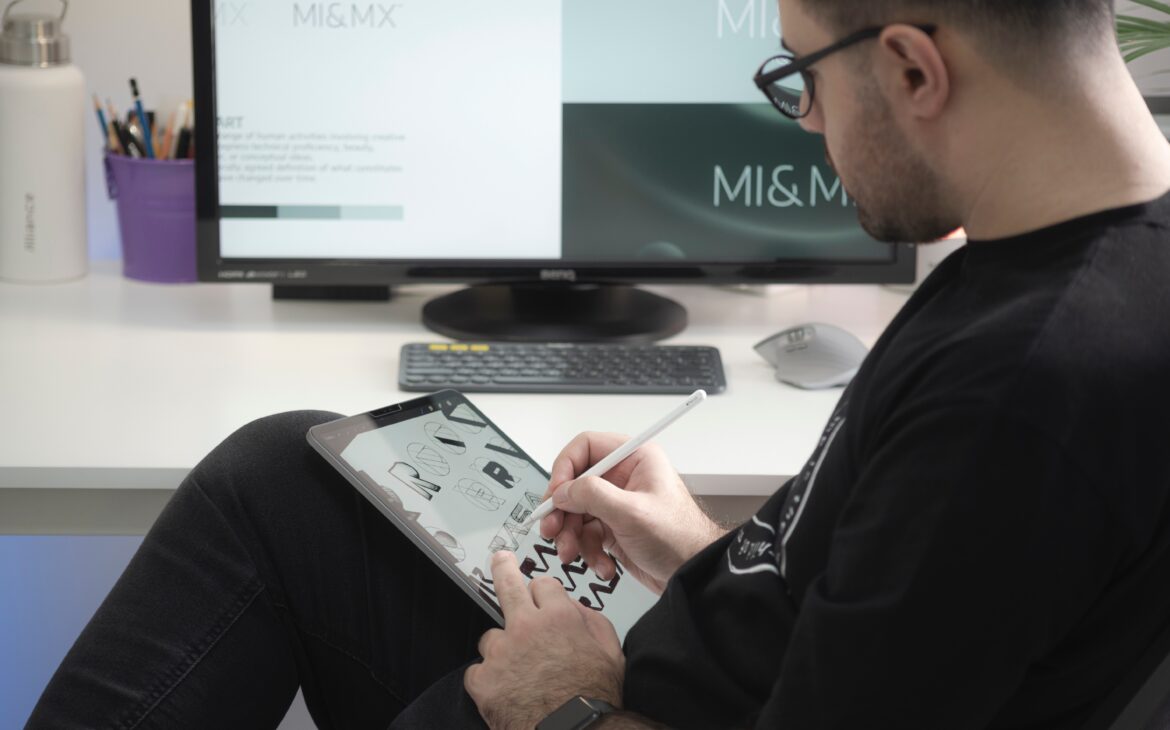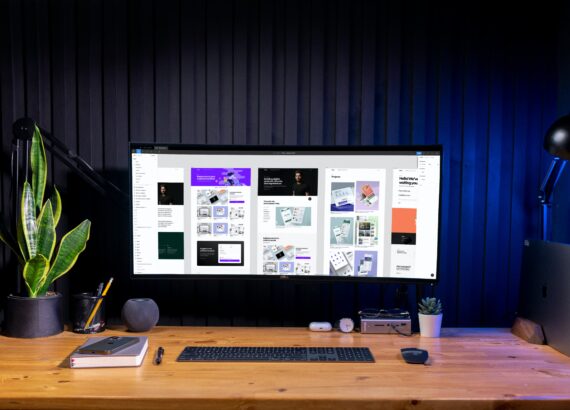Common Mistakes to Avoid in Graphic Design and How to Fix Them
Graphic design is a dynamic field that requires a keen eye for aesthetics, creativity, and attention to detail. However, even the most skilled designers can make mistakes that can hinder the effectiveness and impact of their work. In this article, we will explore five common mistakes in graphic design and provide practical solutions to fix them. By understanding these pitfalls and learning how to avoid them, designers can elevate their designs to a new level of professionalism and achieve their intended objectives with greater success. So, let’s delve into the common mistakes encountered in graphic design and discover effective strategies to overcome them.
1. Introduction to common mistakes in graphic design
Understanding the importance of avoiding mistakes in graphic design
It’s about effectively communicating a message and creating a visual experience for the audience. However, even the most experienced designers can sometimes make mistakes that hinder the impact of their work. In this article, we will explore five common mistakes in graphic design and provide tips on how to fix them. By avoiding these pitfalls, you can elevate your designs and ensure they resonate with your intended audience.
2. Poor typography choices and how to improve them
Tips for improving typography in graphic design
Typography plays a crucial role in graphic design, and making poor choices can completely undermine the effectiveness of your work. Choosing the wrong typeface can make your design feel off-brand or difficult to read. Additionally, using too many font styles or inconsistent typography can create visual chaos. To improve your typography, start by selecting typefaces that align with the message and tone of your design. Stick to a few font styles and use them consistently throughout your work. Consider factors like legibility, hierarchy, and contrast to ensure your typography is both visually appealing and functional.
3. Ineffective colour schemes and how to create harmonious designs
Steps to create visually appealing colour schemes
Colour is a powerful tool in graphic design, but using colours without careful consideration can lead to disastrous results. Clashing or inappropriate colour combinations can create visual discomfort and make your design hard to look at. On the other hand, underutilizing colour psychology means missing out on the opportunity to evoke specific emotions or create a desired atmosphere. To create harmonious designs, take the time to study colour theory and understand how different colours work together. Use tools like colour palettes and swatches to maintain consistency and balance in your design. Experiment with different combinations to find the perfect colour scheme that enhances your message and engages your audience.

4. Overcomplicated layouts and how to simplify them
Methods to simplify and streamline graphic design layouts
It’s easy to get carried away and try to fit every bit of information into a single design. However, overcomplicating layouts can overwhelm the viewer and dilute the impact of your message. Cluttered and confusing layouts make it difficult for the audience to navigate through your design and understand the main points. To simplify your layouts, prioritize the most important information and let it breathe by giving it ample space. Use hierarchy and visual cues to guide the viewer’s attention. Embrace whitespace and minimalism to create a clean and sophisticated design. Remember, less is often more, so be willing to cut down on unnecessary elements and keep your layouts focused and concise.
By avoiding these common mistakes in graphic design, you can elevate the quality of your work and ensure that your designs effectively communicate your message. Take the time to consider your choices in typography, colour, and layout, and remember that simplicity and consistency are key. Happy designing!
5. Lack of Visual Hierarchy and How to Establish Clear Focal Points
Designs lacking proper emphasis and hierarchy
Let’s face it, we’ve all come across designs that make us scratch our heads and wonder where to look first. This common mistake occurs when there is a lack of visual hierarchy in a design. Visual hierarchy refers to the arrangement and organization of elements in a way that guides the viewer’s attention and creates a clear focal point.
6. Importance of establishing clear focal points in graphic design
Having a visual hierarchy is crucial because it helps viewers navigate through a design and understand its message more effectively. Without a clear focal point, your design can become overwhelming and confusing. It’s like trying to find Waldo in a crowd without any hints – frustrating and time-consuming.
Techniques to create effective visual hierarchy in designs
So, how do you establish a visual hierarchy and create clear focal points? Here are a few techniques to help you out:
1. Size Matters: Play with the size of your elements. Larger elements naturally draw more attention, so use them strategically to highlight important information.
2. Color Contrast: Utilize color contrast to guide the viewer’s eye. Vibrant colours or contrasting shades can make certain elements pop and stand out.
3. Typography Matters Too: Different fonts and font sizes can also contribute to the visual hierarchy. Use bold or italic fonts for headings and subheadings to make them stand out from the body text.
4. Negative Space: Don’t be afraid of empty spaces! Negative space, also known as white space, can help create separation between elements and emphasize the focal point.
By implementing these techniques, you can ensure your designs have a clear focal point and are easy for viewers to navigate.
7. Ignoring Responsive Design Principles and How to Create Adaptable Designs
Designing without considering different screen sizes and devices
In our modern world, people are browsing the internet on an array of devices and screen sizes. Ignoring this fact can lead to a major mistake in graphic design. If your design looks fantastic on a desktop but falls apart on a mobile phone or tablet, you risk losing a significant portion of your audience.
Common challenges in responsive graphic design
Creating responsive designs comes with its fair share of challenges. Things like varying screen sizes, different orientations, and limited space can make it tricky to maintain the integrity of your design. It requires careful consideration and adaptation to ensure your design looks great across all devices.
Best practices for creating adaptable designs
To avoid this mistake, it’s crucial to follow some best practices for creating adaptable designs:
1. Think Mobile-First: Start your design process with mobile devices in mind. This way, you’ll prioritize the most critical elements and ensure a smooth transition to larger screens.
2. Grid Systems: Utilize grid systems to establish a consistent layout that can adapt to different screen sizes. Grids provide structure and help maintain the visual integrity of your design.
3. Flexible Images: Use responsive images that can scale and adjust to fit various screen resolutions. This ensures that images always look their best, regardless of the device.
4. Test, Test, Test: Regularly test your design on different devices and screen sizes.
By embracing responsive design principles and following these best practices, you can create designs that adapt seamlessly to different devices and screen sizes.
8. Key Takeaways and Tips for Avoiding Common Mistakes in Graphic Design
Summary of the common mistakes discussed
In this article, we’ve covered five common mistakes in graphic design and how to fix them. From avoiding clichés and overcomplicating designs to managing colour choices and establishing visual hierarchy, these are the pitfalls every designer should be aware of.
Final thoughts on improving graphic design skills
While it’s important to recognize and address these mistakes, it’s also crucial not to take yourself too seriously. The design should be fun and playful! So, don’t be afraid to experiment, challenge conventions, and inject your unique personality into your work.
Continuously seek inspiration, learn from others, and stay updated with industry trends. Embrace feedback and always strive to grow as a designer. With time, practice, and a touch of wit, you’ll be creating brilliant designs that captivate and connect with your audience.
9. Conclusion
In conclusion, graphic design is a challenging and ever-evolving field, but by recognizing and rectifying common mistakes, designers can enhance the quality and impact of their work. Remember to pay attention to typography choices, create harmonious colour schemes, simplify layouts, establish visual hierarchy, and embrace responsive design principles. By implementing these strategies, designers can create designs that not only captivate the audience but also effectively communicate the intended message. So, take these lessons to heart, continuously learn and improve, and let your graphic designs shine with excellence.
FAQ
1. What are some common typography mistakes in graphic design?
Some common typography mistakes in graphic design include using inappropriate typefaces, using too many font styles within a design, and not paying attention to font readability. These mistakes can make the design visually unappealing and difficult to read.
2. How can I create a harmonious colour scheme in my graphic designs?
To create a harmonious colour scheme, consider using colour theory principles such as complementary, analogous, or monochromatic colour combinations. Also, take into account colour psychology to evoke specific emotions or feelings. Experiment with different colour combinations and use colour tools to find the perfect harmony for your design.
3. Why is establishing visual hierarchy important in graphic design?
Establishing a visual hierarchy is crucial in graphic design because it helps guide the viewer’s attention, creates a clear flow of information, and emphasizes the most important elements in the design. Without visual hierarchy, the design may appear confusing and fail to effectively communicate its message.
4. What should I consider when designing for responsive devices?
When designing for responsive devices, consider the different screen sizes and orientations that your design will be viewed on. Make sure your design elements adapt and rearrange appropriately to maintain a pleasing and functional layout across various devices. Test your design on different devices and use responsive design frameworks or techniques to ensure a seamless user experience.
Thank you for reading 🙂
If you want to build your website at an affordable price contact: www.nextr.in
Read this: How To Become A Web Developer?


















